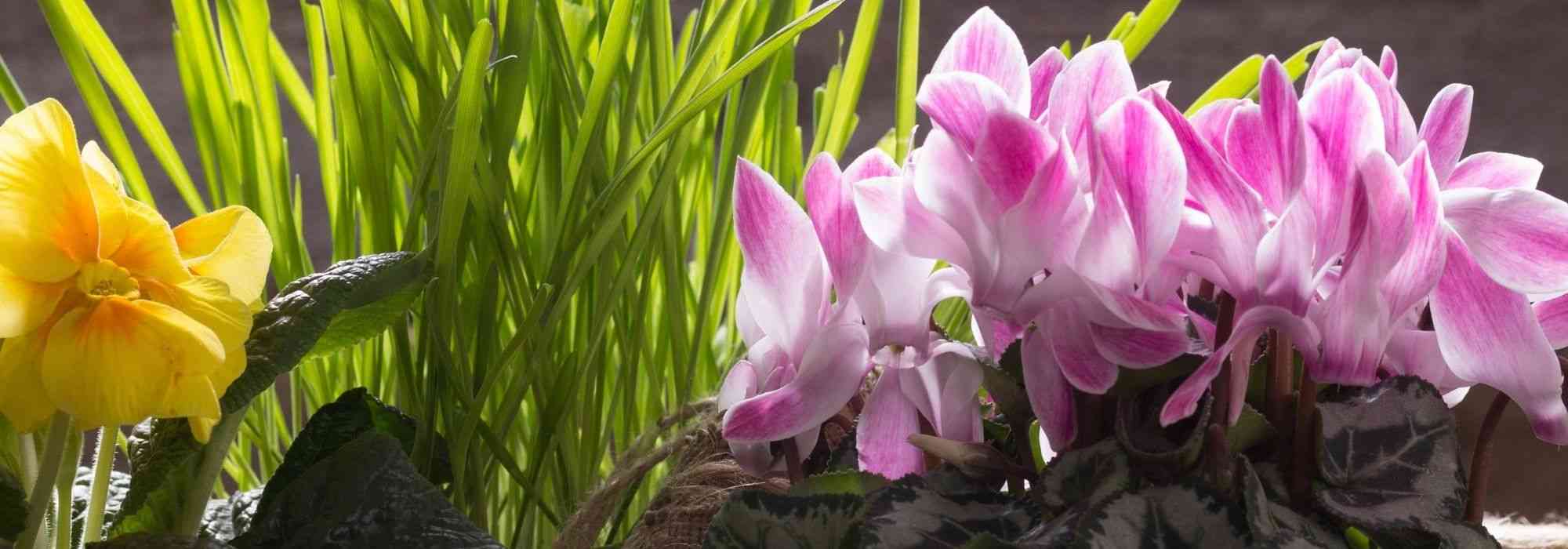
Create a spring planter: 7 ideas
our plant combinations and tips for beautiful spring planters
Contents
It’s the end of summer, time to think about next spring! Indeed, a beautiful spring planter is prepared in September/October, ideal time to plant spring bulbs.
Here are our ideas for creating a spring pot or planter!
100% Bulb Planter
To create this container, nothing could be simpler! Simply plant bulbs at the recommended planting depths (always keen to help, we indicate these details on our sachets).
You will need bulbs of Fritillaire uva vulpis. This somewhat baroque name hides a true botany jewel with pendulous purple bells marginate with yellow. Accompany it with multiflorous hyacinths, Narcissus ‘February Gold’ (which, as its name suggests, flowers very early) and muscari.
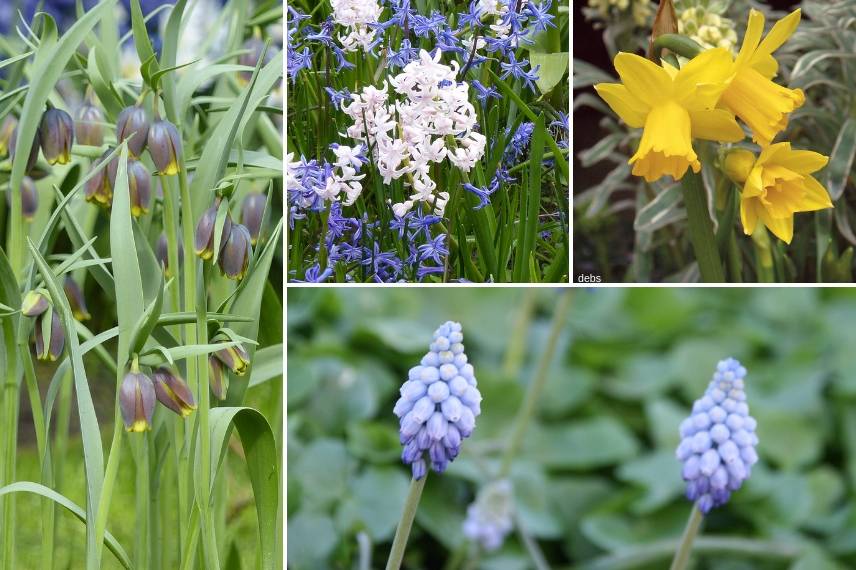
Fritillaria uva-vulpis, Blue multiflorous hyacinth and white multiflorous hyacinth, Narcissus ‘February Gold’ and Muscari ‘Valerie Finnis’
Remember to place a good layer of drainage in the bottom of the pot (clay balls, gravel) and lighten the substrate with fine gravel. Indeed, excess water causes bulbs to rot and fritillaries are particularly sensitive to it.
Once flowering has finished, allow foliage of bulbous plants to yellow to regenerate the bulbs; afterwards you can lift them and replant in the garden or put them aside for a composition the following season.
Which exposure?
Prefer partial shade for this arrangement.
Easter special
Create this “Easter Special” in a basket to create a cosy nest effect. The snake’s-head fritillary lends itself well to Easter compound arrangements. It will be in good company with the hyacinth ‘Purple Sensation’, the denticulate primrose ‘Cashmiriana’ and Heuchera ‘Obsidian’. Add some coloured eggs or speckled quail eggs and you’re done!
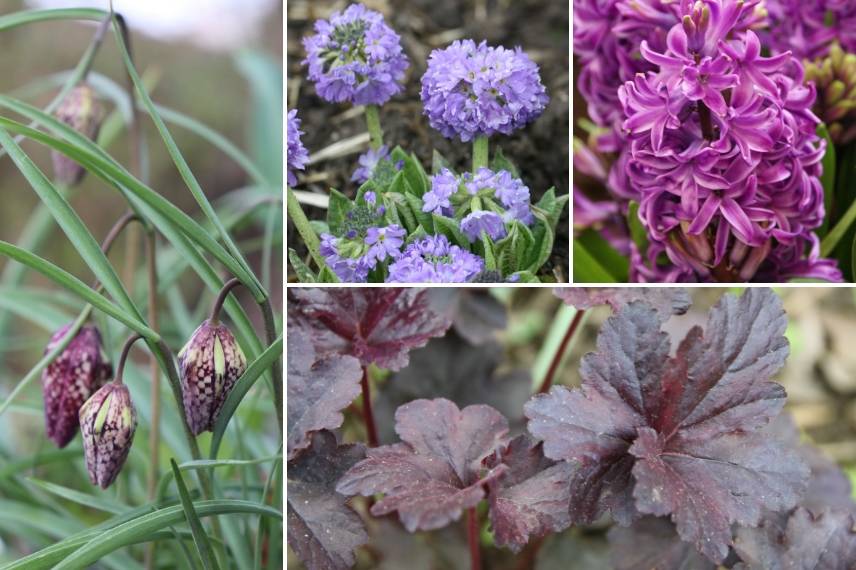
Fritillaria meleagris, Primula denticulata ‘Cashmiriana’, Hyacinth ‘Purple Sensation’ and Heuchera ‘Obsidian’
Later on, you can plant everything out in the garden!
Which exposure?
Place your basket in partial shade or in gentle sun, the substrate should remain cool.
Silver-blue basket
The blue and silver basket will look stunning on your garden lounge table! It is compound of a dwarf artemisia that will elegantly cascade from the basket, small fragrant violet‑coloured violets and muscari. This arrangement is very simple to put together.
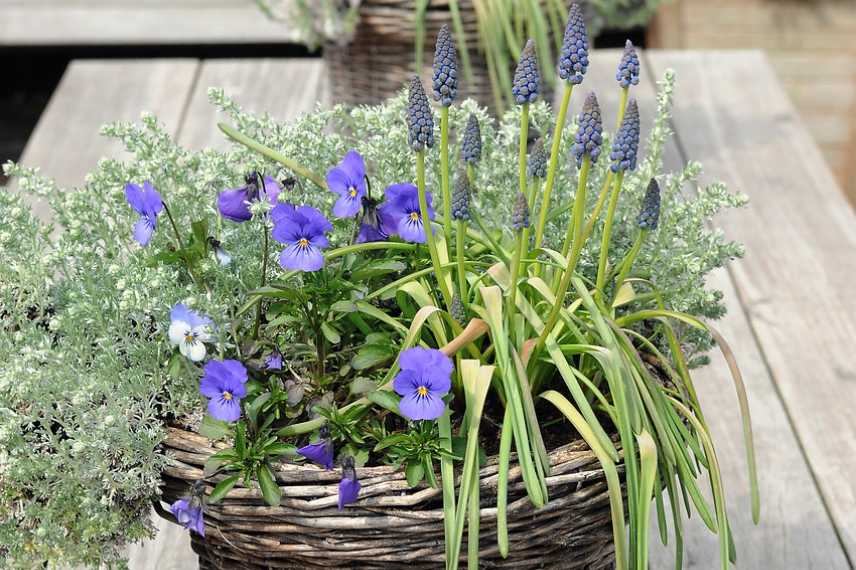
Artemisia schmidtiana ‘Nana’, Viola (Mrs Pinehurst for example) and Muscari armeniacum
Water sparingly. Once the display is over, replant your plants and bulbs. Artemisia should be replanted in a sunny, well‑drained spot, even if soil is poor and dry.
Which exposure?
Place this arrangement in bright but not scorching sun.
Monochrome planter
Monochrome enthusiasts will opt for the white planter. Very easy to make as well, it is composed of white hyacinths, muscaris and saxifrages. Try placing the hyacinths to one side, then the muscaris and finally the saxifrage to create a graduated shape.
Which exposure?
Place this planter on a partly shaded windowsill for example or near a walkway to enjoy the delightful scent of the hyacinths.
Perfect duo planter
Why not embrace simplicity with this charming duo of pink and violet-purple? This time, opt for a round pot rather than a planter — the result will be prettier. Tulip ‘Christmas Dream’ is an early variety and flowers in March–April depending on region. Its colour harmonises perfectly with the hue of the Heuchera, whose name is so poetic.
Once tulip flowering is over, the container will remain attractive with the Heuchera on its own. Unless you prefer to replant it in the garden! Afterwards, it will reward you with a delicate summer flowering. Just ensure the substrate stays moist.
Which exposure?
Place your container preferably in partial shade
Chic Romantic Planter
Myosotis always pairs perfectly with tulips, highlighting them. Pair it with lily-flowering tulip ‘Ballade’ and add a few velvety touches provided by auriculas. Finally, small foliage of a potted Muehlenbeckia cascadera. If unavailable, you can replace it with small ivy.
Potting mix should be well drained. Keep it moist with regular waterings but without excess. Best to let potting mix dry out between waterings.
Which exposure?
Place container in full sun or partial shade.
White planter with a touch of yellow
This container features far more white than yellow, but you can easily replace the narcissi and pansies with sunnier shades. It is composed of Narcissus ‘Avalanche’ which produces clusters of small bicoloured corollas, combined with double white daisies, white pansies with yellow centres and a Hellebore ‘Ice n’ Roses White’.
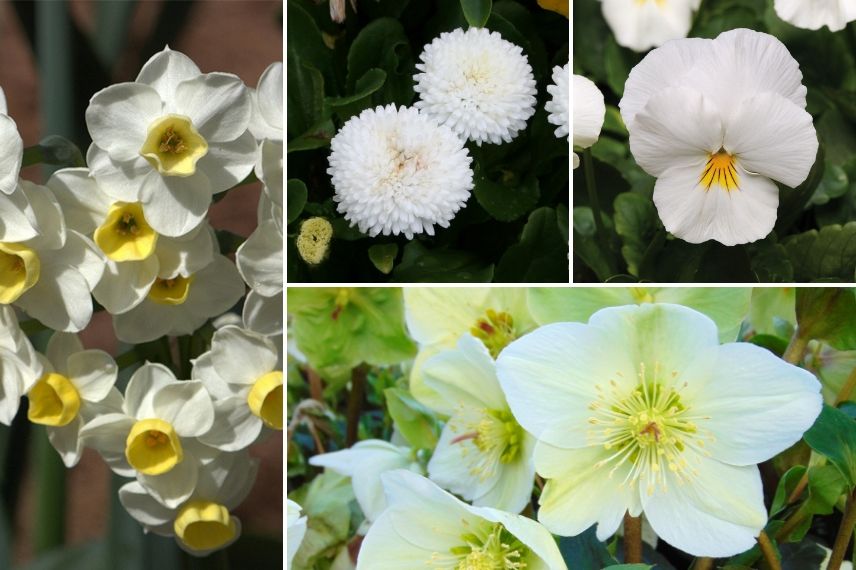
Narcissus ‘Avalanche’, Bellis perennis, Viola ‘Cool Wave’ and Helleborus ‘Ice n’ Roses White’
Soil must be perfectly drained! Note, this Narcissus is moderately hardy (down to -10°C).
Which exposure?
Place this container preferably in partial shade.
Some more tips
- Choose a quality potting compost specially designed for window boxes and pots
- Potting compost dries out quickly in pots, especially small ones
- Don’t forget to add fertiliser and consult our advice sheet to choose the fertiliser for your potted plants and window boxes.
- Also read our advice sheet, especially if you buy your plants as plug plants: How to plant window boxes and hanging baskets with annuals in plug plants?
- Subscribe!
- Contents
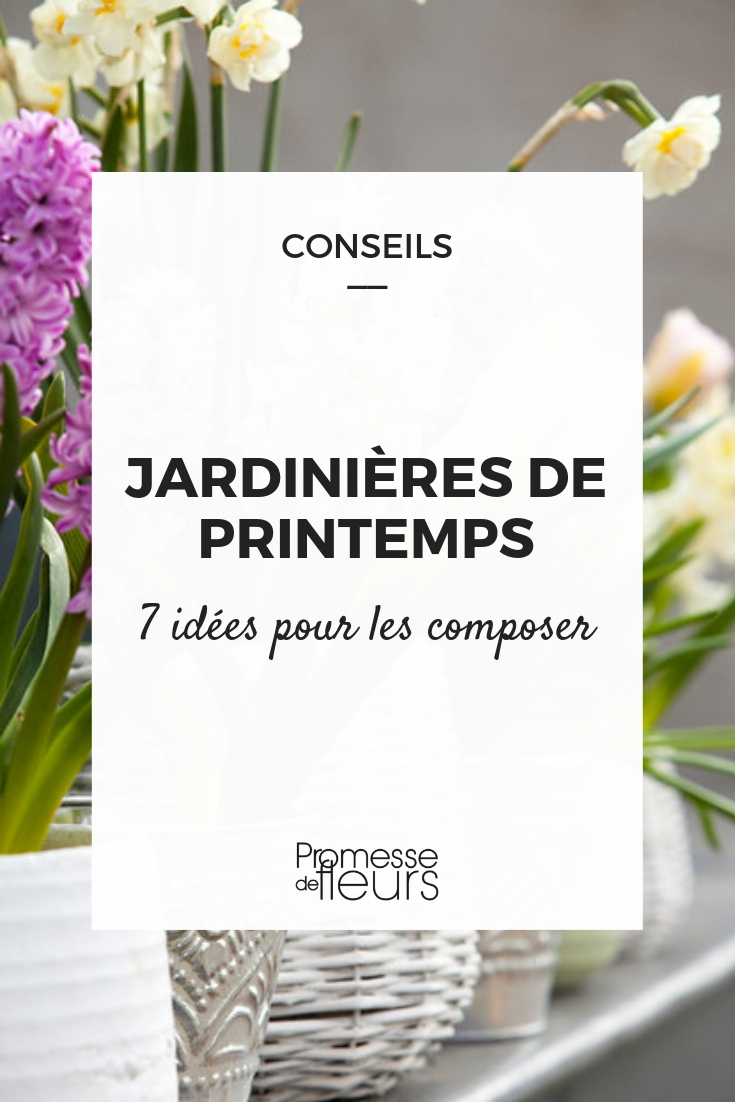































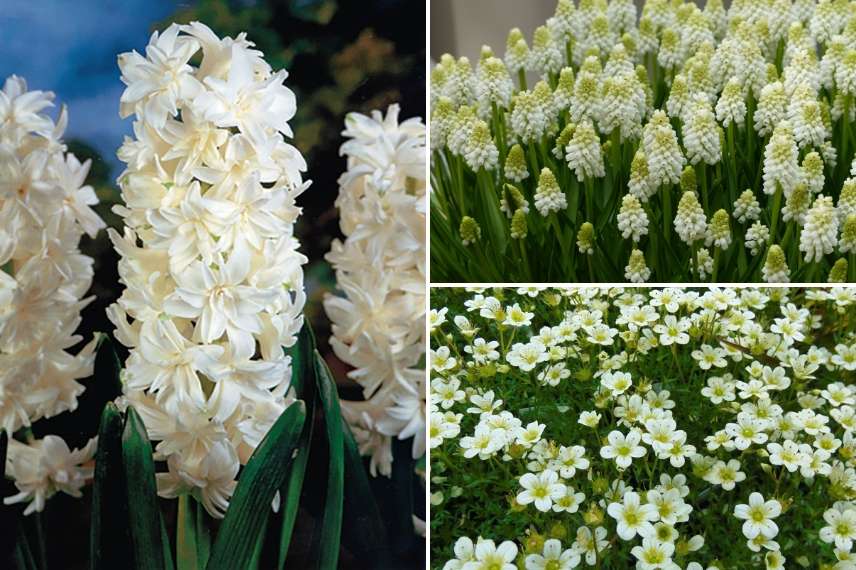
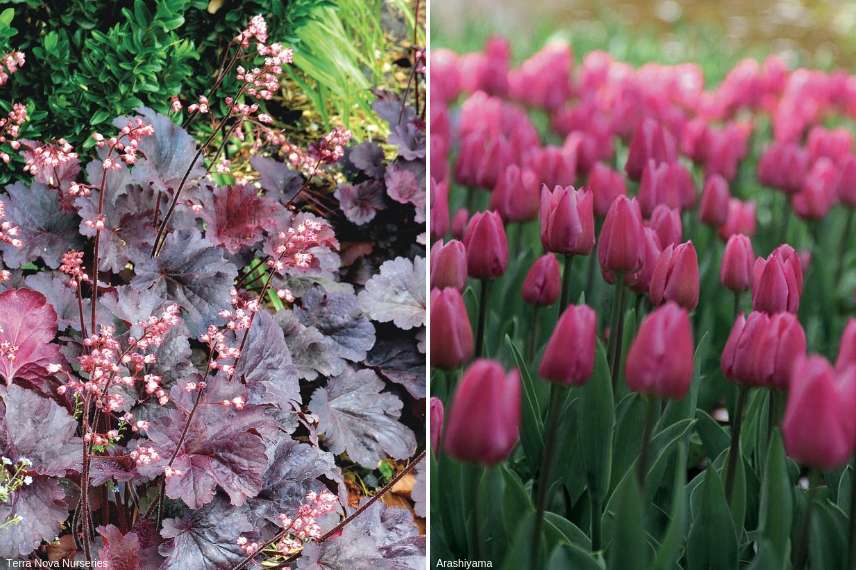
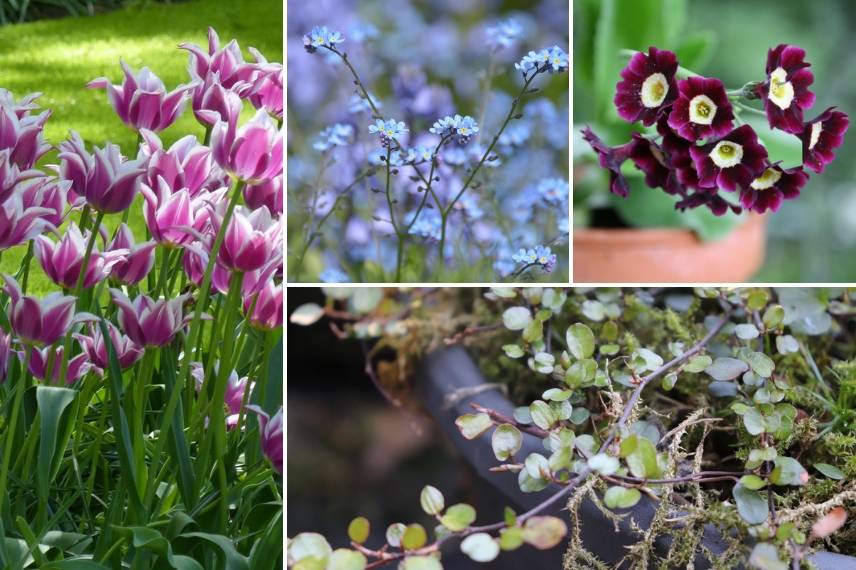
Comments